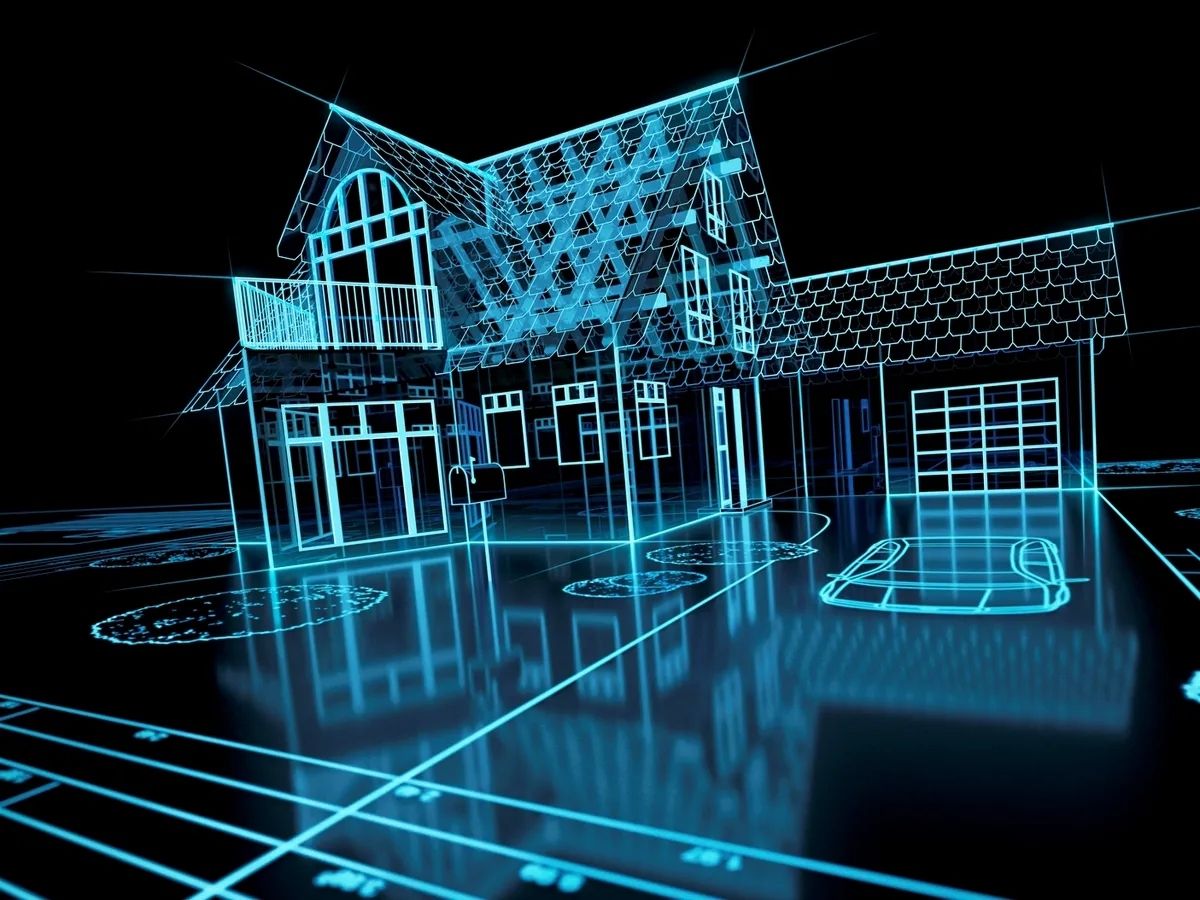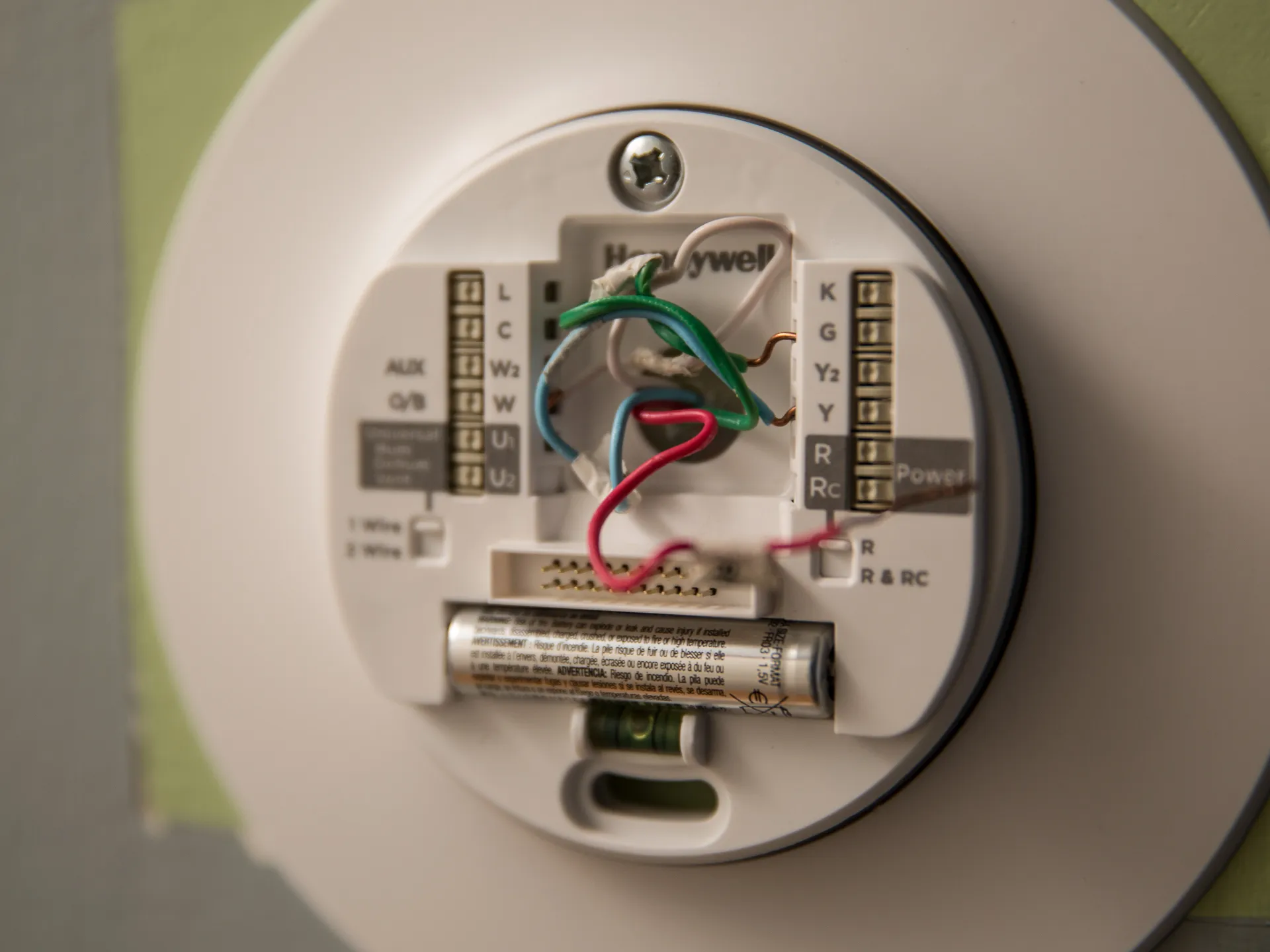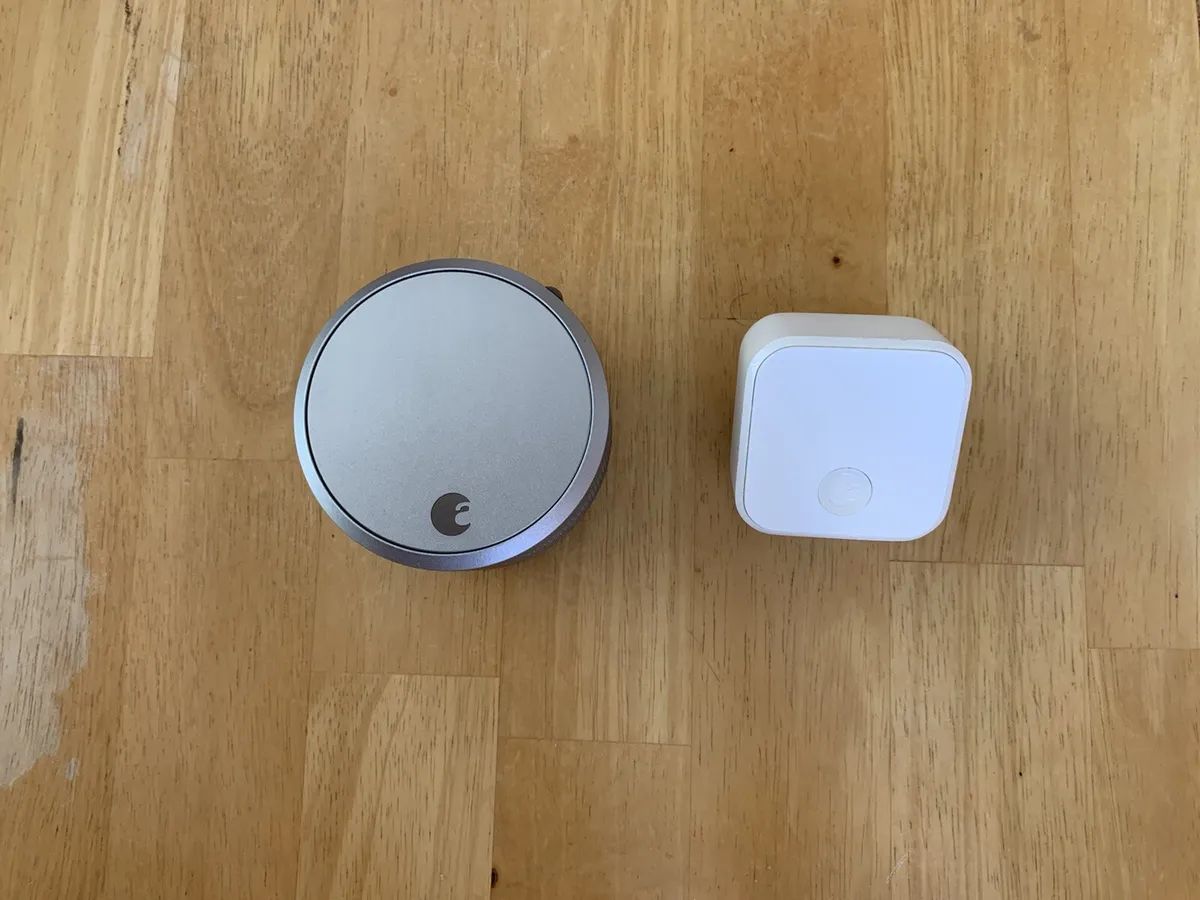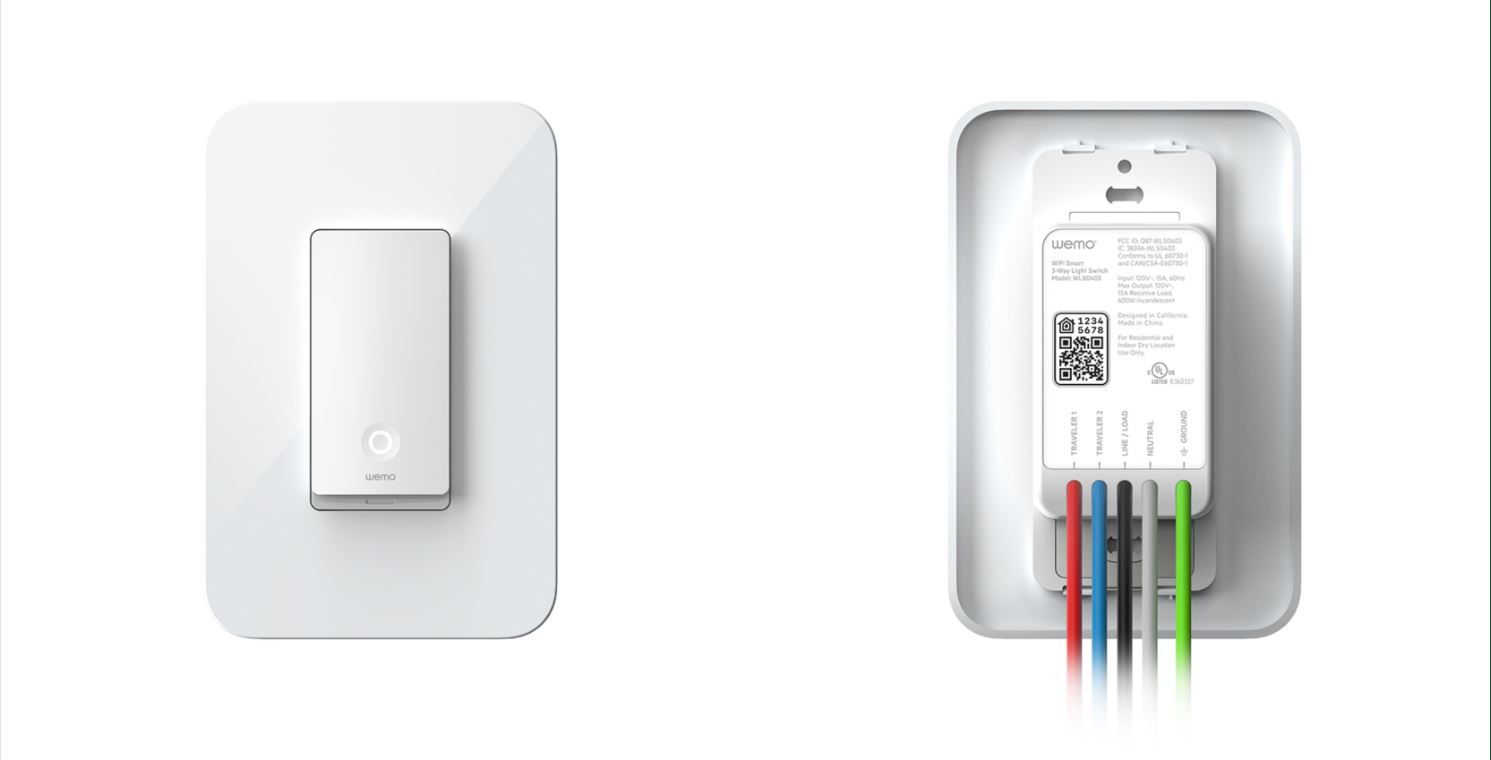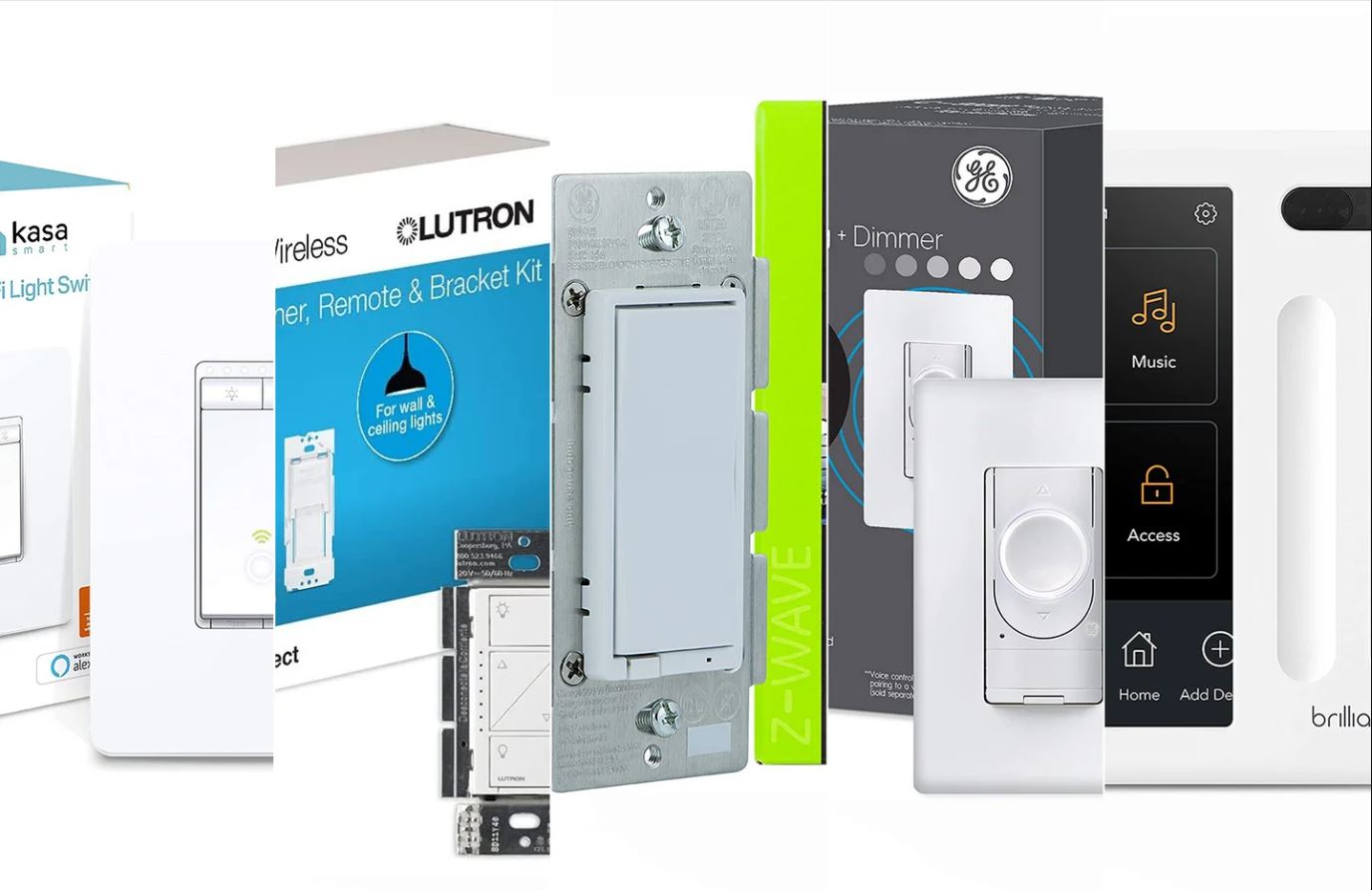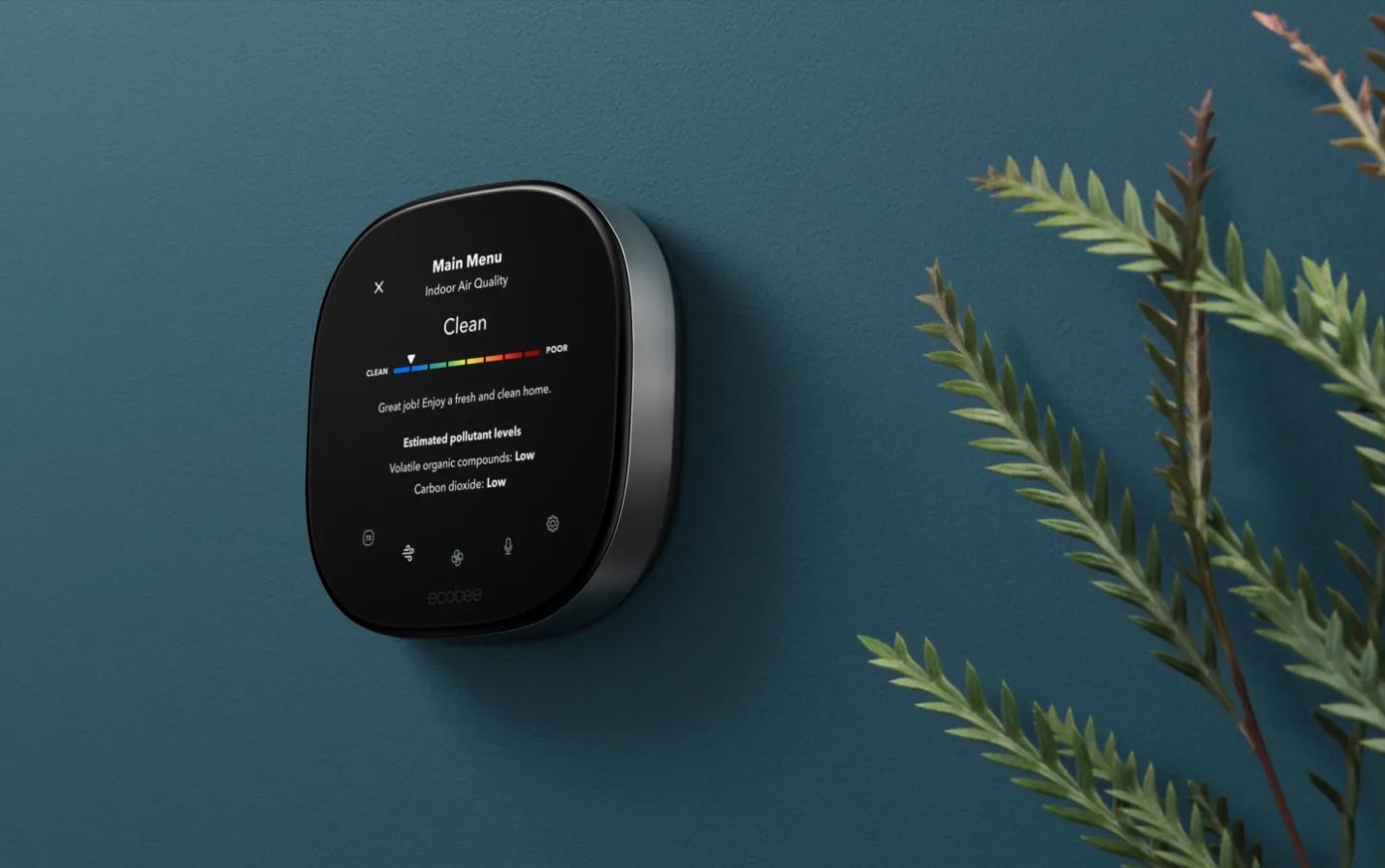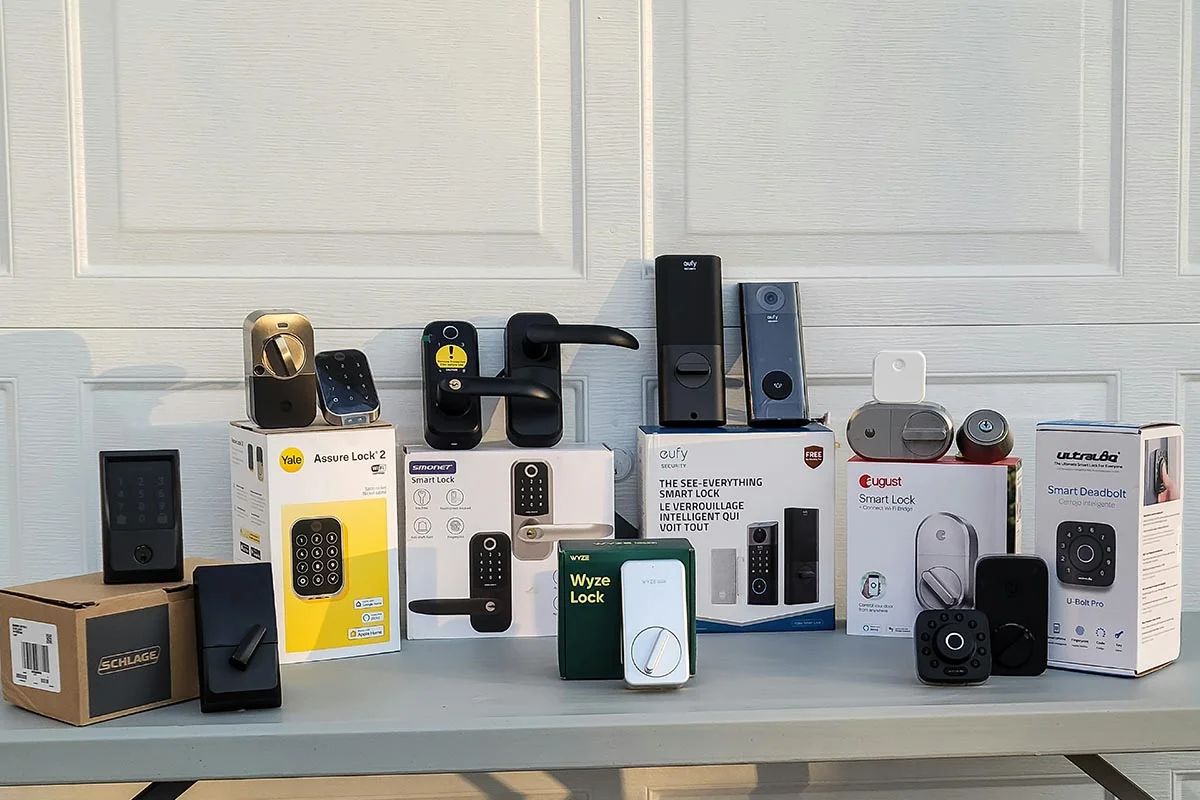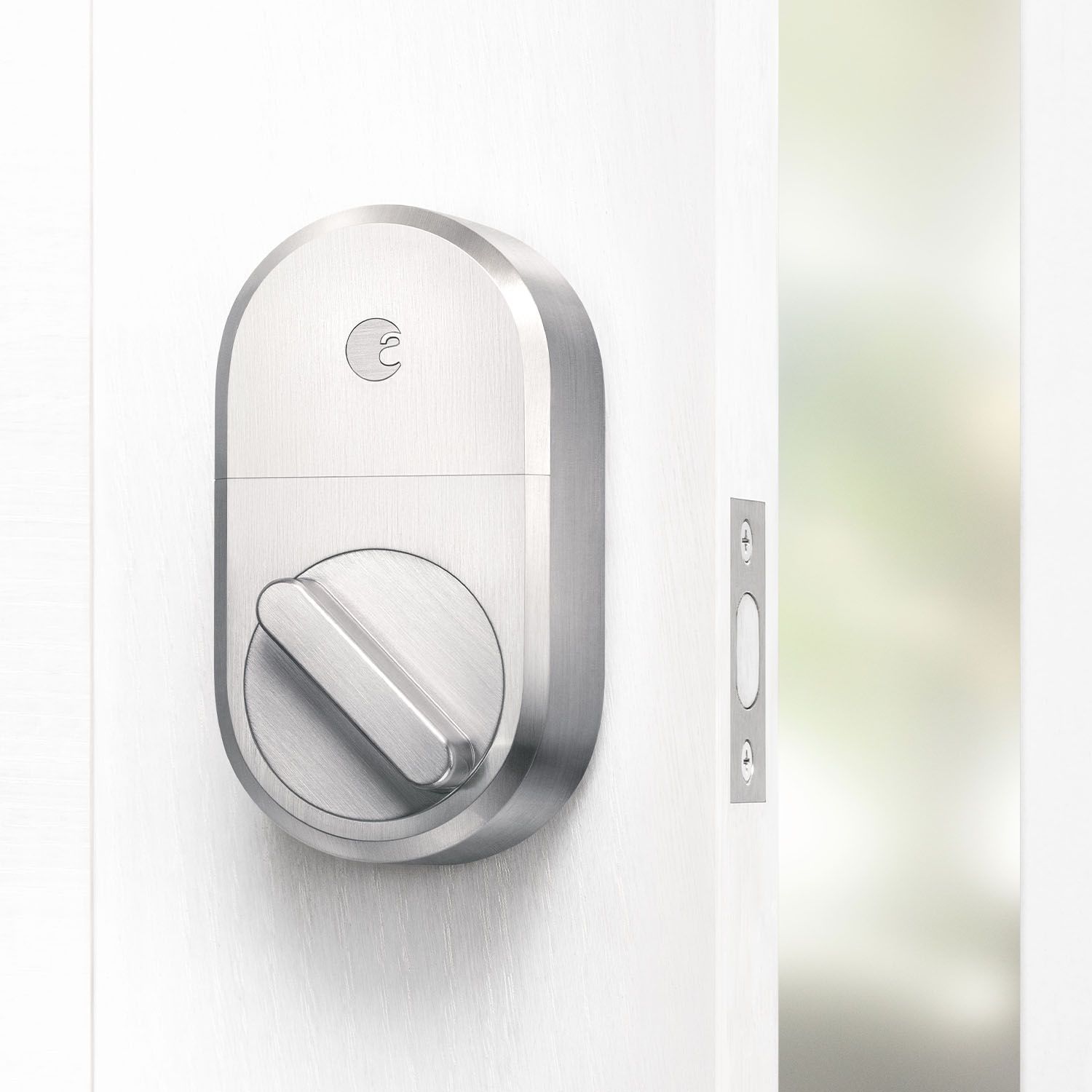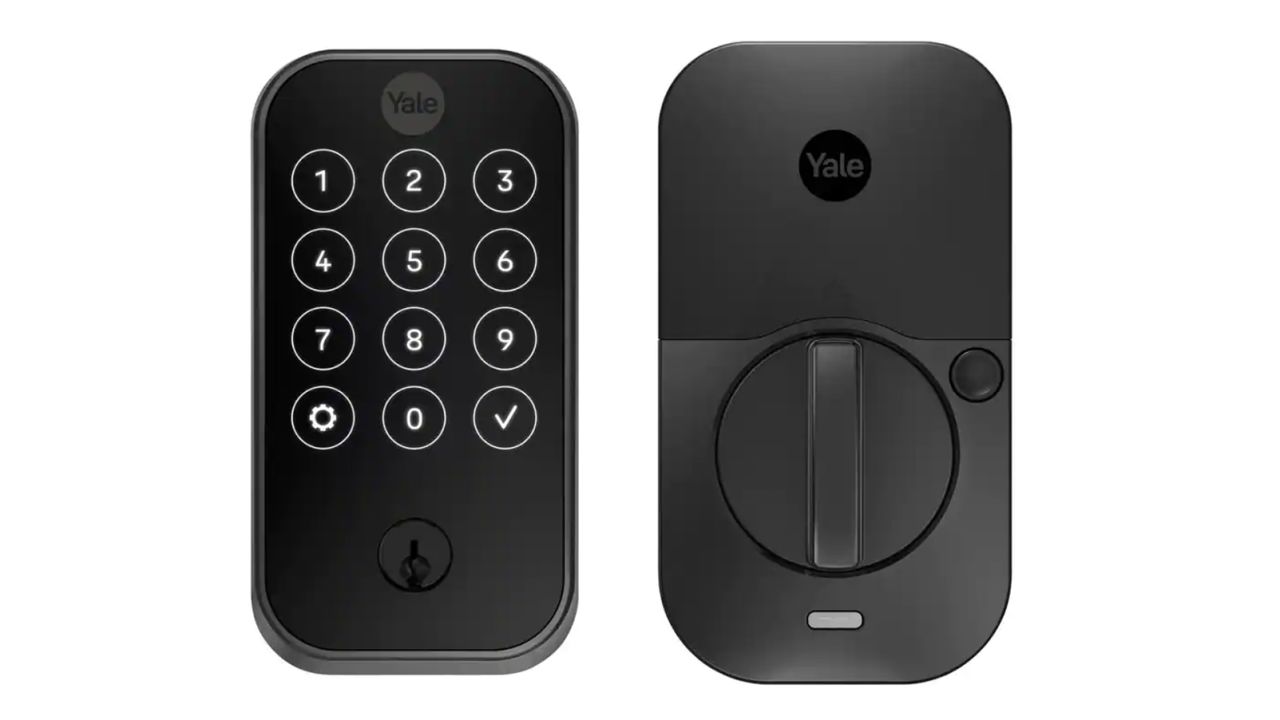Introduction
Welcome to the future of home living – the era of smart homes. With advances in technology, our homes are becoming more connected and intelligent, offering convenience, efficiency, and security like never before. From controlling your lights with a simple voice command to remotely monitoring your home through smart cameras, upgrading to a smart home can enhance your daily life in numerous ways.
Imagine coming home after a long day and walking into a well-lit, cozy space with just the right temperature. Your favorite music is playing softly in the background, and your appliances have already started preparing dinner for you. All of this is possible with a smart home setup.
But what exactly is a smart home? Simply put, it is a home equipped with devices and systems that can be controlled and automated for increased functionality and efficiency. These devices, often referred to as smart devices or IoT (Internet of Things) devices, are connected to a central hub, allowing you to manage and monitor them remotely through your smartphone or voice-controlled assistants such as Amazon Echo or Google Home.
There are several reasons why you should consider upgrading your home to a smart home. Firstly, the convenience factor cannot be overlooked. With smart devices integrated into your home, you can automate routine tasks, eliminating the need for manual effort. For example, you can set your lights to turn on and off automatically at specific times, saving energy and ensuring you always come home to a well-lit environment.
Furthermore, smart home devices can improve energy efficiency, resulting in reduced utility bills. Smart thermostats, for instance, can learn your temperature preferences and adjust accordingly, optimizing energy usage and providing cost savings over time. The ability to control your appliances remotely also allows you to minimize wasted energy by turning off devices when not in use.
Another key benefit of upgrading to a smart home is enhanced security. Smart home security systems provide advanced features such as motion detection, video surveillance, and real-time alerts, giving you peace of mind and allowing you to monitor your home even when you’re away. You can also remotely lock and unlock doors, ensuring the safety of your loved ones and property.
In this article, we will explore the various smart home devices available on the market, such as smart lighting, thermostats, voice-controlled assistants, security systems, cameras, appliances, and entertainment systems. We will also delve into how these devices work together to create a seamless smart home experience. So, get ready to embark on a journey to transform your home into a smart home and embrace the future of living.
Reasons to Upgrade to a Smart Home
Upgrading to a smart home offers a plethora of benefits that can greatly enhance your lifestyle. Here are a few compelling reasons why you should consider making the switch:
- Convenience: One of the primary reasons to upgrade to a smart home is the convenience it brings. With smart devices at your fingertips, you can control various functions of your home effortlessly. Whether it’s adjusting the thermostat, dimming the lights, or locking the doors, you can do it all with a simple voice command or a few taps on your smartphone.
- Energy Efficiency: Smart home devices can help you reduce your energy consumption and save money on utility bills. For instance, smart thermostats learn your preferences and automatically adjust the temperature to optimize energy usage. Smart lighting systems can be programmed to turn off when no one is in the room, saving electricity. With these energy-saving features, you can make your home more eco-friendly and cost-effective.
- Enhanced Security: A smart home can provide a heightened level of security for you and your loved ones. Smart security systems offer features such as motion sensors, video surveillance, and real-time alerts that allow you to monitor your home remotely. You can even integrate door locks with your smartphone, ensuring that your home is protected at all times. The peace of mind that comes with a secure home is invaluable.
- Improved Comfort: With a smart home, you can create a comfortable living environment tailored to your preferences. Smart thermostats can adjust the temperature based on your schedule and preferences. Smart blinds can be programmed to open and close at specific times, optimizing natural light and privacy. By automating these aspects of your home, you can enjoy a personalized and cozy atmosphere every day.
- Remote Accessibility: One of the standout features of a smart home is the ability to control and monitor your devices from anywhere in the world. Forgot to turn off the lights before leaving for vacation? No problem. With a smart home setup, you can access your devices remotely through your smartphone and make adjustments as needed. This level of control and convenience ensures that you are always in charge, no matter where you are.
These are just a few of the many reasons why upgrading to a smart home is a worthwhile investment. Convenience, energy efficiency, enhanced security, improved comfort, and remote accessibility are just the tip of the iceberg when it comes to the benefits that smart home technology can offer. With the right combination of devices and a well-integrated system, you can transform your home into a more efficient, secure, and comfortable living space. So, why wait? Embrace the future of home living and upgrade to a smart home today!
Smart Home Devices Overview
The world of smart home devices is vast and ever-expanding. From lighting to security systems, there are various devices available to automate and enhance different aspects of your home. Let’s take a closer look at some of the most popular smart home devices:
- Smart Lighting: Smart lighting systems allow you to control your lights remotely and create customized lighting schemes. You can adjust brightness, color, and even set schedules to have your lights turn on and off automatically. Some smart bulbs also have built-in motion sensors, making them energy-efficient and convenient.
- Smart Thermostats: These devices revolutionize home temperature control. They learn your preferences and adjust the temperature accordingly, ensuring optimal comfort and energy efficiency. You can also control your thermostat remotely, so you can come home to a cozy environment without wasting energy when you’re away.
- Voice-Controlled Assistants: Voice-controlled assistants, such as Amazon Echo with Alexa or Google Home with Google Assistant, act as the centralized hub for your smart home. They can play music, answer questions, and control various smart devices through voice commands. With these assistants, you can effortlessly manage your smart home ecosystem.
- Home Security Systems: Smart home security systems offer advanced features to protect your home. They include sensors to detect intruders, door/window sensors, and security cameras for video surveillance. These systems can send real-time alerts to your smartphone, allowing you to monitor your home’s security from anywhere.
- Smart Cameras: Smart cameras provide an extra layer of security and peace of mind. You can monitor your home remotely through live video feeds and receive motion detection alerts. Some cameras even offer two-way audio, allowing you to communicate with people at your doorstep or check in on your pets.
- Smart Appliances: From refrigerators to washing machines, smart appliances are transforming household chores. These appliances can be controlled remotely, allowing you to start or stop them from anywhere. Some models even have advanced features like inventory management and energy usage tracking, making your life more convenient and efficient.
- Smart Entertainment Systems: With smart entertainment systems, you can elevate your home theater experience. Smart TVs and speakers can be controlled through voice commands or smartphone apps, allowing you to stream your favorite shows and music seamlessly. You can also integrate these devices with your smart lighting system to create a truly immersive ambiance.
These are just a few examples of the diverse range of smart home devices available. When selecting devices for your smart home, consider compatibility, ease of use, and integration possibilities. By strategically combining these devices and integrating them into your home, you can create a smart home ecosystem that suits your needs and enhances your lifestyle.
How to Choose the Right Smart Home Hub
A smart home hub serves as the central brain of your smart home ecosystem, allowing you to control and manage all your smart devices from a single point of control. When choosing the right smart home hub for your needs, there are several factors to consider. Let’s explore some key considerations:
- Compatibility: Ensure that the smart home hub you choose is compatible with the devices you already have or plan to add to your smart home. Look for a hub that supports a wide range of popular protocols such as Zigbee, Z-Wave, and Wi-Fi, as these are commonly used by smart devices.
- Integration: Consider how well the smart home hub integrates with other systems and platforms. Some popular hubs have built-in compatibility with voice-controlled assistants like Amazon Alexa or Google Assistant, allowing you to control your smart devices using voice commands. Integration with popular third-party apps and services can also enhance the functionality of your smart home ecosystem.
- User Interface: Evaluate the user interface of the smart home hub and ensure it is intuitive and easy to navigate. Look for hubs that offer smartphone apps or web interfaces that provide a seamless and user-friendly experience. A visually appealing and user-friendly interface will make it easier for you to control and monitor your smart devices.
- Scalability: Consider your future needs and whether the smart home hub is scalable. As your smart home expands, you may want to add more devices and integrate new technologies. Choosing a hub that can accommodate a growing number of devices and supports future updates will ensure that your smart home ecosystem remains flexible and adaptable.
- Security: It’s crucial to prioritize the security features of the smart home hub. Look for hubs that offer robust encryption, authentication, and data protection mechanisms to safeguard your personal information and prevent unauthorized access. Additionally, consider whether the hub has a backup system in case of power outages or internet disruptions.
- Reviews and Reputation: Research and read reviews about different smart home hubs to assess their performance, reliability, and customer satisfaction. Look for hubs that have a good reputation in terms of customer support and timely firmware updates to ensure ongoing functionality and compatibility with new devices.
By taking these factors into account, you can make an informed decision when choosing the right smart home hub for your needs. Remember that each smart home setup is unique, so it’s essential to choose a hub that aligns with your specific devices, preferences, and long-term goals. A well-chosen smart home hub will act as the control center for your connected devices, enabling seamless integration and enhancing the overall experience of your smart home.
Smart Lighting: Enhancing Your Home’s Ambiance and Efficiency
Smart lighting is a key component of a modern smart home, offering both functionality and aesthetic advantages. By upgrading to smart lighting, you can transform the ambiance of your home while improving energy efficiency. Let’s delve into how smart lighting can enhance your home:
Customizable Lighting: One of the main benefits of smart lighting is the ability to customize and control your lighting environment. With smart bulbs and lighting systems, you can adjust the brightness, color temperature, and even create customized lighting scenes to suit your mood or specific occasions. From a warm and cozy ambiance for a relaxing evening to vibrant colors for a party, smart lighting allows you to set the perfect lighting scene for any moment.
Convenience and Automation: Smart lighting offers convenience through automation. You can schedule your lights to turn on and off at specific times, simulating occupancy when you’re away, enhancing home security. Additionally, motion sensors integrated with smart lighting can trigger lights to turn on or off automatically as you enter or leave a room, eliminating the need for manual switches and reducing energy consumption.
Energy Efficiency: Smart lighting can significantly improve energy efficiency in your home. Features such as dimming capabilities and scheduled automation allow you to reduce energy usage and save on electricity costs. By fine-tuning the lighting intensity, you can choose the right amount of light for different tasks and eliminate unnecessary energy waste.
Integration with Other Devices: Smart lighting can easily be integrated with other smart home devices, enhancing the overall functionality and experience of your smart home. For example, you can sync your smart lighting with your smart speaker or voice-controlled assistant, allowing you to control the lights using simple voice commands. Integration with other systems like security alarms or motion sensors can also enhance your home’s security by syncing the lights to respond to certain triggers.
Remote Control: With smart lighting, you can control your lights from anywhere using your smartphone or tablet. Forgot to turn off the lights when you left home? No problem. With a few taps on your device, you can turn them off remotely, saving energy and ensuring peace of mind. Remote control also enables you to create a welcoming environment by turning on the lights before you arrive home.
Personalized Scenes and Routines: Smart lighting allows you to create personalized lighting scenes and routines tailored to your daily activities. For example, you can set a morning routine that gradually increases the brightness of your lights to mimic the rising sun, helping you wake up gently. You can also create a nighttime routine that gradually dims the lights as bedtime approaches, promoting a calm and relaxing atmosphere.
By embracing smart lighting technology, you can enhance the ambiance and efficiency of your home. The ability to customize your lighting, automate tasks, improve energy efficiency, integrate with other devices, and control your lights remotely all contribute to a more convenient, comfortable, and aesthetically pleasing living environment. Upgrade to smart lighting and experience the transformative power it can bring to your home.
Smart Thermostats: Optimizing Comfort and Saving Energy
Smart thermostats are revolutionizing the way we control the temperature in our homes. These intelligent devices not only enhance comfort but also help save energy and reduce utility costs. Let’s explore how smart thermostats can optimize comfort and improve energy efficiency:
Personalized Temperature Control: Smart thermostats offer personalized temperature control based on your preferences and routines. These devices learn your behavior and adjust the temperature accordingly, ensuring optimal comfort at all times. You can set different temperatures for different times of the day, allowing you to wake up to a warm temperature in the morning and save energy while you’re away during the day.
Remote Access and Control: One of the standout features of smart thermostats is the ability to control them remotely. Using a smartphone app, you can adjust the temperature in your home from anywhere, ensuring that it’s comfortable when you arrive and saving energy when you’re not there. Remote access also allows you to monitor and manage your thermostat while on vacation or away from home for extended periods.
Energy Efficiency and Cost Savings: Smart thermostats are designed to optimize energy usage, resulting in significant cost savings. These devices can automatically adjust the temperature based on factors such as outdoor weather conditions, humidity levels, and occupancy patterns. By not overcooling or overheating your home, smart thermostats enable you to reduce energy waste and save on heating and cooling costs.
Smart Integration and Automation: Smart thermostats can be integrated with other smart home devices, such as smart lighting or occupancy sensors, to further enhance energy efficiency and comfort. For example, if no one is detected in a room for a specified period, the thermostat can automatically lower the temperature to save energy. Integration with weather forecast data can also allow the thermostat to adjust temperature settings based on anticipated temperature changes.
Usage Reports and Insights: Many smart thermostats provide usage reports and insights to help you better understand your energy consumption patterns. These reports can show you how much energy you’re using and provide suggestions on how to optimize energy efficiency. With this information, you can make informed decisions about adjusting your settings to further reduce energy consumption and minimize your environmental impact.
Smart Home Integration: Smart thermostats can seamlessly integrate with other smart home systems and devices, creating a well-connected and efficient environment. Integration with voice-controlled assistants, such as Amazon Alexa or Google Assistant, allows you to control your thermostat with simple voice commands. Compatibility with smart home hubs also enables central management and automation of various smart devices in your home.
By installing a smart thermostat in your home, you can optimize comfort, save energy, and reduce utility costs. The ability to personalize temperature control, access and control your thermostat remotely, promote energy efficiency through automation and integration, and gain insights into your energy usage all contribute to a more comfortable and eco-friendly living environment. Upgrade to a smart thermostat and experience the benefits of advanced temperature control technology.
Voice-Controlled Assistants: Making Life Easier with Hands-Free Commands
Voice-controlled assistants, such as Amazon Alexa and Google Assistant, have revolutionized the way we interact with our smart homes. These virtual assistants offer convenient and hands-free control over your smart devices, making daily tasks easier and more efficient. Let’s explore how voice-controlled assistants can enhance your home and simplify your life:
Convenient Control: One of the standout features of voice-controlled assistants is the convenience they bring. With just a simple voice command, you can control your smart devices, such as lights, thermostats, and security systems, without lifting a finger. Whether you’re busy cooking in the kitchen or relaxing on the couch, you can control your home with ease, eliminating the need to locate and operate physical buttons or switches.
Hands-Free Assistance: Voice-controlled assistants act as your personal assistant, ready to help whenever you need it. With a simple voice command, you can ask for the weather forecast, play music, set reminders, and even ask general knowledge questions. From checking the latest news headlines to finding a new recipe, voice-controlled assistants can perform a wide range of tasks, allowing you to multitask and stay productive.
Smart Home Integration: Voice-controlled assistants seamlessly integrate with your smart home devices, creating a cohesive and efficient ecosystem. You can control multiple devices at once by creating routines and custom commands. For example, with a single command like “Goodnight,” you can turn off the lights, adjust the thermostat, and lock the doors simultaneously. The ability to control your entire smart home effortlessly through voice commands makes managing your home a breeze.
Personalized Experience: Voice-controlled assistants learn your preferences and habits over time, providing a personalized experience tailored to your needs. As they gather data and understand your routines, they can make proactive suggestions and recommendations. For example, if you usually turn on the lights when you enter a room, the assistant may offer to automate this action for you in the future.
Integration with Third-Party Apps: Voice-controlled assistants integrate with various third-party apps and services, expanding their capabilities. You can order food delivery, request an Uber, or control other smart devices like your TV or smart locks through voice commands. Integration with popular apps and services allows you to centralize control and access multiple functionalities from a single device.
A Growing Ecosystem: The ecosystem of voice-controlled assistants continues to grow, with new features and capabilities being added regularly. Developers are constantly creating new skills and applications, expanding the possibilities of what these assistants can do. From playing games to controlling your smart home security system, the ecosystem of voice-controlled assistants offers endless opportunities to simplify and enhance your life.
By incorporating a voice-controlled assistant into your smart home, you can enjoy the convenience of hands-free control and a personalized, efficient living experience. Whether it’s managing your smart devices, accessing information, or performing daily tasks, voice-controlled assistants make it easier to navigate and interact with your smart home. Embrace the future of smart technology and let your voice be the command that transforms your home into a more intuitive and responsive environment.
Home Security Systems: Protecting Your Loved Ones and Property
When it comes to the safety and security of your home, a reliable home security system is essential. Home security systems offer advanced features that protect your loved ones and property, providing you with peace of mind. Let’s explore how home security systems can enhance the security of your home:
Intrusion Detection: One of the primary functions of a home security system is to detect and deter intruders. Motion sensors, door/window sensors, and glass break detectors are commonly included in home security systems to monitor and alert you about any unauthorized entry attempts. These sensors can instantly trigger alarms and send real-time alerts to your smartphone, allowing you to take immediate action.
Video Surveillance: Home security systems often include cameras that provide visual monitoring of your property both indoors and outdoors. These cameras can capture footage in high resolution and offer features such as night vision and wide-angle views. With remote access through a smartphone app or web interface, you can view live video feeds, review recorded footage, and even communicate through two-way audio.
24/7 Monitoring: Professional monitoring services are available with many home security systems, ensuring that someone is always watching over your home. These monitoring services receive notifications from your security system and can quickly dispatch emergency responders in the event of an alarm. Having a monitoring service adds an additional layer of security and peace of mind, especially when you’re away from home.
Remote Access and Control: Home security systems can be controlled and monitored remotely, enabling you to manage your system even when you’re not at home. Using a smartphone app, you can arm or disarm your security system, receive real-time alerts, and view your cameras from anywhere. This remote access ensures that you stay connected and informed about your home’s security at all times.
Integration with Other Devices: Home security systems can integrate with other smart home devices, creating a comprehensive and interconnected security ecosystem. For example, you can link your security system with your smart lighting to program lights to turn on and off randomly when the alarm is triggered, giving the appearance that someone is home. Integration with smart locks allows you to remotely control and monitor access to your home.
Environmental Monitoring: Some home security systems include sensors for monitoring environmental conditions such as smoke, carbon monoxide, and water leaks. These sensors can detect potential hazards and send alerts to your security system or smartphone, allowing you to take necessary action before a disaster occurs. This added layer of protection helps safeguard your home and loved ones from various threats.
Investing in a home security system is a proactive step towards protecting your loved ones and property. Whether it’s deterring intruders, monitoring your property through video surveillance, or utilizing 24/7 monitoring services, a home security system offers peace of mind and ensures that help is just a button press or a notification away. With the ability to access and control your system remotely and integrate it with other smart devices, you can create a comprehensive security ecosystem that enhances the protection of your home. Take the necessary measures to secure your home and embrace the peace of mind that comes with a robust home security system.
Smart Home Cameras: Keeping an Eye on Things, Anywhere, Anytime
Smart home cameras provide an extra layer of security and peace of mind by allowing you to monitor your home remotely. Whether you’re at work, on vacation, or simply in another room, smart home cameras enable you to keep an eye on things from anywhere, at any time. Let’s explore how smart home cameras can enhance your home security:
Visual Monitoring: Smart home cameras provide visual monitoring of your home, allowing you to see what’s happening in real-time. Whether you’re concerned about potential intruders, checking in on your pets, or ensuring that your children are safe, smart cameras offer a live feed that you can access through your smartphone or web interface. This visual monitoring allows you to stay connected and informed about the activities in and around your home.
Remote Access: One of the standout features of smart home cameras is the ability to access and control them remotely. Using a smartphone app, you can view live video feeds, review recorded footage, and even control the camera’s movement if it has pan, tilt, and zoom functions. This remote access ensures that you can monitor your home even when you’re away, providing peace of mind and the ability to respond quickly to any unexpected situations.
Two-Way Audio: Many smart home cameras feature built-in two-way audio functionality, allowing you to communicate with those in your home or visitors on your property. Whether you want to talk to your family members, give instructions to a delivery person, or deter potential intruders, two-way audio provides an extra level of interaction and security. You can use your smartphone’s microphone and speaker to communicate through the camera’s audio feed.
Intelligent Alerts: Smart home cameras can send you real-time alerts when they detect motion or specific events that you’ve pre-set in the camera’s settings. These alerts can be delivered via push notifications to your smartphone, providing instant updates about any noteworthy activity. This feature allows you to be alerted to potential security breaches or unusual events, ensuring that you can take appropriate action promptly.
Cloud Storage and Recording: Many smart home cameras offer cloud storage options for recorded footage, allowing you to access and review past events. This is especially useful if you want to review footage from previous days or if you need evidence for an incident. Cloud storage ensures that your footage is securely stored and accessible, even if the camera itself is damaged or stolen.
Integration with Other Devices: Smart home cameras can integrate with other smart devices, enhancing their overall functionality and convenience. For example, you can integrate cameras with your smart lighting system, so the lights automatically turn on when motion is detected. Integration with voice-controlled assistants allows you to control and view camera feeds through simple voice commands.
Smart home cameras empower you to monitor your home and loved ones from wherever you are. Whether it’s for security purposes, checking in on pets, or keeping an eye on children, these cameras offer visual monitoring, remote access, intelligent alerts, and integration with other devices. By incorporating smart home cameras into your home security setup, you can ensure that you have a continuous and accessible view of your home, providing you with peace of mind and an added layer of protection.
Smart Appliances: Revolutionizing Household Chores
Smart appliances are transforming the way we approach household chores, making tasks more efficient, convenient, and enjoyable. From refrigerators to washing machines, smart appliances offer advanced features and connectivity that streamline everyday routines. Let’s explore how smart appliances are revolutionizing household chores:
Remote Control: Smart appliances can be controlled remotely using your smartphone or tablet. For example, you can start or stop your washing machine, adjust the temperature of your oven, or schedule the cleaning cycle for your robotic vacuum, all from the convenience of your mobile device. Remote control allows you to manage your appliances even when you’re away from home, saving time and effort.
Energy Efficiency: Smart appliances are designed with energy efficiency in mind, helping you reduce your carbon footprint and save on utility bills. They often come with features such as eco-mode and energy usage monitoring, allowing you to make informed decisions about your energy consumption. For example, smart refrigerators can optimize cooling cycles based on usage patterns, and smart dishwashers can adjust water usage and cycle lengths for optimal efficiency.
Personalized Settings: Smart appliances offer personalized settings that cater to your specific needs and preferences. For instance, smart ovens can store your cooking preferences and adjust cooking times and temperatures accordingly. Smart coffee makers can remember your preferred brew strength and have a cup of coffee ready for you as soon as you wake up. These personalized settings ensure that your appliances adapt to your lifestyle and make your daily routines more efficient.
Timed and Scheduled Operations: Smart appliances allow you to schedule their operations based on your preferred time and day. For example, you can set your smart dishwasher to start a cycle at a specific time, ensuring that you have clean dishes ready when you need them. Timed operations are particularly useful for appliances that consume a lot of energy, allowing you to take advantage of off-peak electricity rates.
Smart Integration: Smart appliances can be integrated with other smart devices and systems in your home, creating a cohesive ecosystem. For example, your smart refrigerator can send a notification to your smartphone when you’re running low on groceries and automatically add items to your shopping list. Integration with voice-controlled assistants allows you to control and manage your appliances using simple voice commands.
Advanced Monitoring and Diagnostics: Smart appliances provide advanced monitoring and diagnostics capabilities, allowing you to stay informed about their performance and maintenance needs. For instance, smart washing machines can detect and diagnose issues, and send alerts to your smartphone, providing you with insights and troubleshooting suggestions. This proactive approach to maintenance ensures that your appliances are running optimally and reduces the likelihood of unexpected breakdowns.
Smart appliances have revolutionized household chores by offering remote control, energy efficiency, personalized settings, timed operations, integration with other devices, and advanced monitoring capabilities. These appliances simplify your daily routines, save you time and energy, and provide new levels of convenience and flexibility. Embrace the future of household chores with smart appliances and enjoy a more efficient, organized, and enjoyable home environment.
Smart Entertainment Systems: Elevating your Home Theater Experience
Smart entertainment systems bring a new level of immersion and convenience to your home theater experience. These systems, encompassing smart TVs, speakers, and streaming devices, provide enhanced audio and visual capabilities while integrating seamlessly with other smart home devices. Let’s explore how smart entertainment systems can elevate your home theater experience:
Enhanced Audio and Visual Quality: Smart TVs deliver stunning picture quality with features like 4K Ultra HD, HDR, and OLED technology, providing a more immersive viewing experience. Additionally, smart speakers and soundbars offer advanced audio technologies like Dolby Atmos or DTS:X, creating a surround sound environment that rivals the movie theater experience. Combined, these features transform your living room into a personal cinema.
Streaming Services and Content: Smart entertainment systems provide access to a wide range of streaming services and content, giving you endless options for movies, TV shows, and music. With built-in apps or external streaming devices such as Apple TV or Roku, you can enjoy popular platforms like Netflix, Amazon Prime Video, Spotify, and more. Streaming services offer convenience, allowing you to watch or listen to your favorite content on-demand without relying on physical media.
Voice Control and Smart Integration: Smart entertainment systems can be integrated with voice-controlled assistants such as Amazon Alexa or Google Assistant, allowing you to control your devices through simple voice commands. You can play or pause content, adjust volume, and even search for specific shows or movies using voice control. Integration with other smart devices allows you to create custom routines that trigger actions like dimming the lights and lowering the shades when you start a movie.
Home Theater Automation: With smart entertainment systems, you can automate various aspects of your home theater setup. For example, you can program your lights to gradually dim as you start a movie, creating a more immersive environment. Using home automation hubs or smart remotes, you can control multiple devices simultaneously, eliminating the need for multiple remotes and simplifying your home theater experience.
Multi-Room Audio and Video: Smart entertainment systems allow you to extend your audio and video experience beyond the confines of your home theater. With multi-room capabilities, you can synchronize speakers and TVs in different rooms, ensuring consistent audio or video playback throughout your home. This enables you to enjoy your favorite content seamlessly, whether you’re cooking in the kitchen or unwinding in the bedroom.
Personalized Recommendations: Smart entertainment systems use artificial intelligence and machine learning algorithms to gather data about your viewing and listening preferences. Based on this data, they can provide personalized recommendations for content tailored to your interests. This ensures that you are constantly discovering new movies, TV shows, or music that align with your tastes.
With smart entertainment systems, your home theater experience reaches new heights. Enhanced audio and visual quality, access to streaming services, voice control, automation, multi-room capabilities, and personalized recommendations all contribute to a more immersive and convenient entertainment setup. Upgrade your home theater with smart entertainment systems and enjoy an unparalleled cinematic experience in the comfort of your own home.
The Future of Smart Homes: Exploring Emerging Technologies
The world of smart homes is continuously evolving, and new technologies are emerging to further transform the way we live. These emerging technologies hold the promise of making our homes even smarter, more intuitive, and seamlessly integrated. Let’s explore some of the exciting technologies that represent the future of smart homes:
Artificial Intelligence (AI): AI is poised to play a significant role in the future of smart homes. With advancements in machine learning and natural language processing, AI can learn from our behaviors and preferences to anticipate our needs and automate tasks. AI-powered voice-controlled assistants will become more intelligent and capable, offering personalized recommendations, proactively managing devices, and seamlessly interacting with other smart home systems.
Internet of Things (IoT) Advancements: The IoT landscape will continue to expand, with more devices, sensors, and systems becoming interconnected. As more products enter the market with built-in IoT capabilities, the smart home ecosystem will become more vast and diverse. This will lead to greater interoperability and the ability to create more comprehensive and customized smart home experiences.
5G Connectivity: The deployment of 5G networks will revolutionize the smart home experience. With faster and more reliable wireless connectivity, smart devices will have virtually zero latency, enabling real-time communication and seamless interactions. This will enhance the performance of smart home systems and facilitate the growth of emerging technologies like augmented reality and virtual reality.
Augmented Reality (AR) and Virtual Reality (VR): AR and VR technologies have the potential to transform how we interact with our smart homes. With AR, we can overlay virtual information onto the real world, allowing us to visualize and control our smart devices in a more intuitive way. VR can transport us to virtual spaces where we can explore and experiment with various smart home scenarios, enabling better planning and customization.
Smart Materials and Surfaces: Advancements in smart materials and surfaces will further integrate technology into the very fabric of our homes. From smart windows that adjust their tint based on sunlight to surfaces that can act as touch-sensitive interfaces, these innovations will enhance the functionality and aesthetics of our living spaces. Smart materials will enable seamless control and interaction with our environment, making our homes even more intuitive and responsive.
Energy Harvesting and Sustainability: The future of smart homes will prioritize energy harvesting and sustainability. We will see more devices and systems that generate energy from renewable sources, such as solar panels or kinetic energy from everyday activities. Energy harvesting technologies will contribute to the self-sufficiency of smart homes, reducing dependence on external power sources and minimizing our environmental impact.
Security and Privacy Enhancements: As smart homes become more prevalent, security and privacy will continue to be paramount. Emerging technologies will focus on enhancing encryption and data protection mechanisms to safeguard against cyber threats. New authentication methods, such as biometrics and facial recognition, will ensure that only authorized individuals can access smart home systems and devices.
These emerging technologies give us a glimpse into the future of smart homes, where our living spaces become even more intuitive, connected, and sustainable. AI, IoT advancements, 5G connectivity, AR, VR, smart materials, energy harvesting, and security enhancements are just a few examples of the exciting technologies that will shape the smart homes of tomorrow. Embrace the possibilities and get ready for a future where our homes truly become intelligent extensions of our lives.
Conclusion
As technology continues to advance, the concept of a smart home is no longer a distant dream but a reality that is rapidly transforming our daily lives. From enhancing convenience and efficiency to improving security and comfort, smart homes offer a wide range of benefits that make our living spaces more intuitive, connected, and responsive.
By embracing smart home technology, we can automate routine tasks, customize our living environments, and remotely control and monitor our homes. From controlling the lights and adjusting the thermostat to managing security systems and streaming our favorite content, smart home devices and systems offer convenience at our fingertips.
One of the key factors driving the adoption of smart homes is energy efficiency. With smart devices that optimize energy usage and monitoring systems that give insights into consumption patterns, we can reduce our carbon footprint and contribute to a more sustainable future. Additionally, smart home security systems provide peace of mind, protecting our loved ones and property through advanced features like motion detection, video surveillance, and remote monitoring.
The future of smart homes looks even more promising with emerging technologies like AI, augmented reality, and advanced connectivity making our homes smarter, more intuitive, and interconnected. These technologies will further enhance our control and interaction with our homes, creating personalized and seamless experiences.
As we move forward, it’s important to consider the security and privacy aspects of smart homes. With the increasing connectivity of devices, it becomes crucial to prioritize data protection and ensure that our smart homes remain secure from cyber threats.
In conclusion, upgrading to a smart home offers numerous benefits that enhance our daily lives. From convenience and energy efficiency to security and personalization, smart homes provide a modern and sophisticated living experience. By embracing smart home technology and staying up to date with emerging trends, we can create a home that caters to our unique needs and preferences. So, take the leap and embark on the journey to transform your home into a smart home today.







